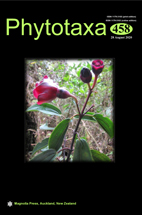Abstract
Although it is widely assumed that Friedrich Welwitsch, who collected about 10,000 specimens in Angola during a seven-year period in the mid-1800s, only proposed names that were validly published by other authors in the Flora of Tropical Africa (FTA), he also provided Latin descriptions that were attached to the specimens. These descriptions were translated into English and used in FTA. Welwitsch was therefore the only author of those names. As a case study, the nomenclature of new species published in the FTA in the genus Kalanchoe (Crassulaceae subfam. Kalanchooideae) is presented. When all the internal evidence in the relevant FTA volume is taken into account, the authorship of all the Kalanchoe species names, bar one, K. welwitschii, which was published by Britten exclusively, is Welwitsch only, and not “Welwitsch ex Britten” or “Welwitsch ex Oliver” as usually cited. Kalanchoe coccinea and K. brachyloba, whose distributions extend beyond Angola, have type localities in that country, and were also based on Welwitsch’s descriptions. An itinerary of Welwitsch’s Angolan expedition and maps showing the areas where he collected in the country are provided. Type localities from where Welwitsch collected the Kalanchoe species published in FTA are placed on the map. The typification of seven Kalanchoe names is clarified, some through correcting previous designations and, where required, second-step lectotypifications.

